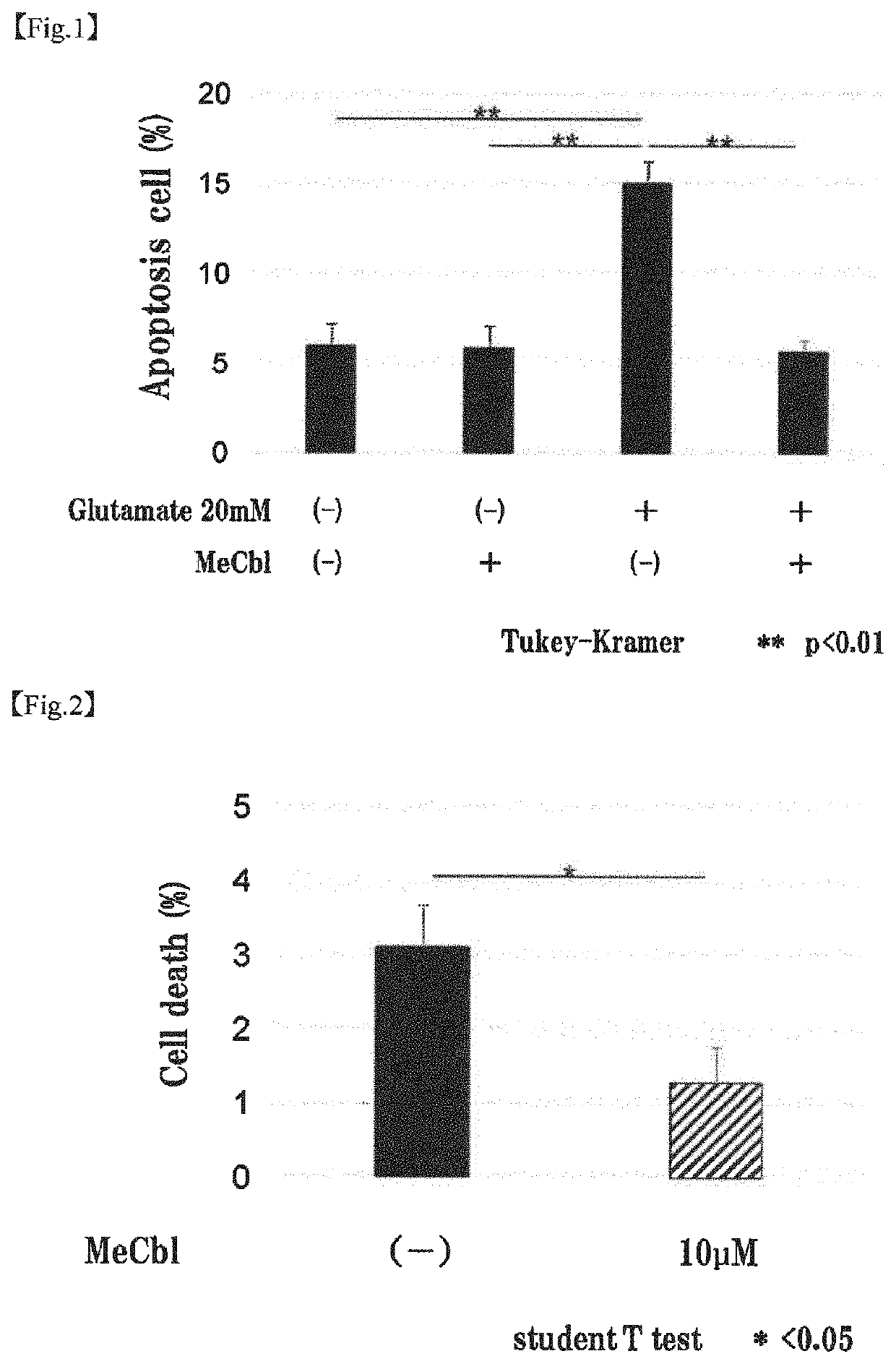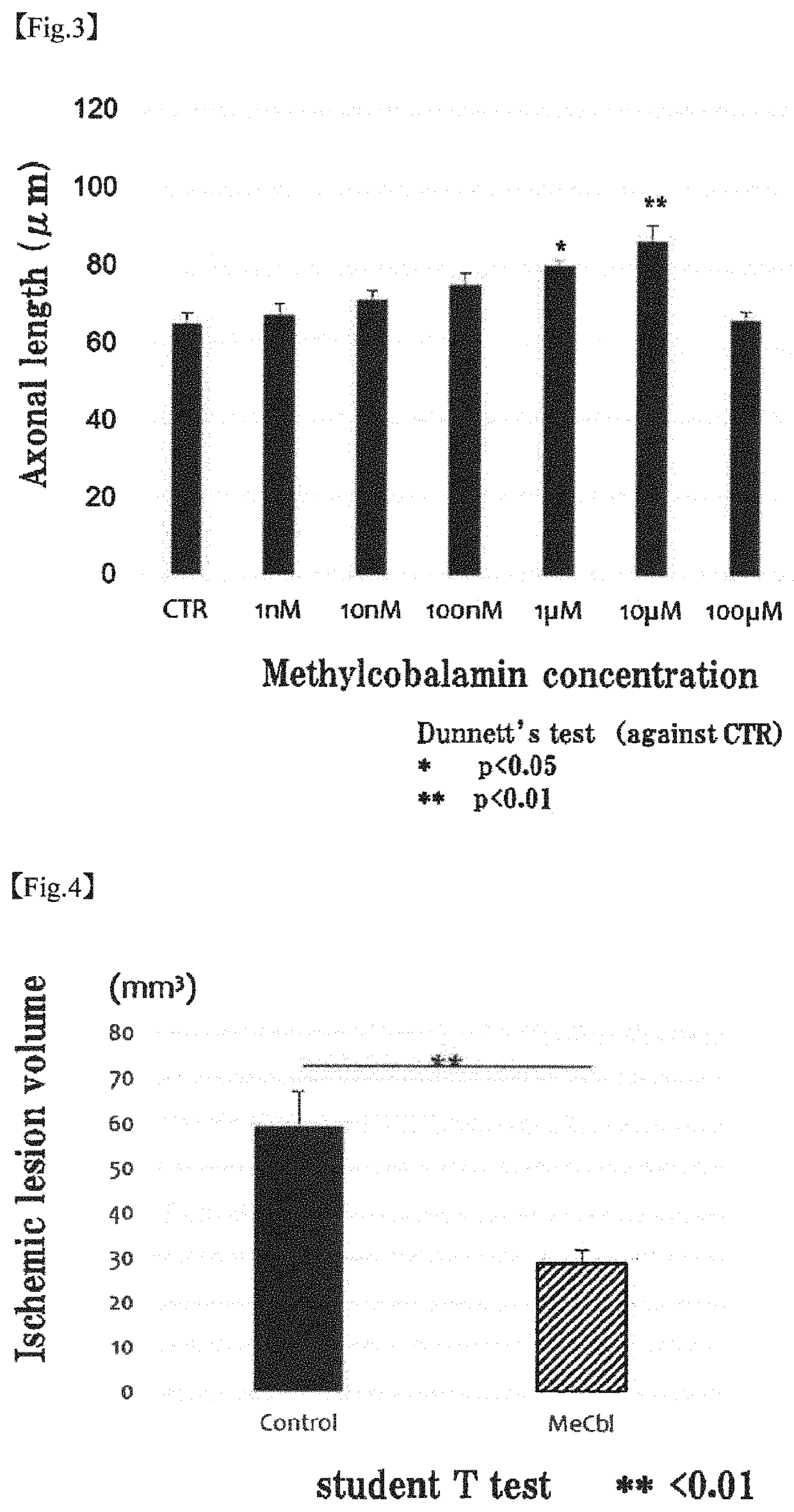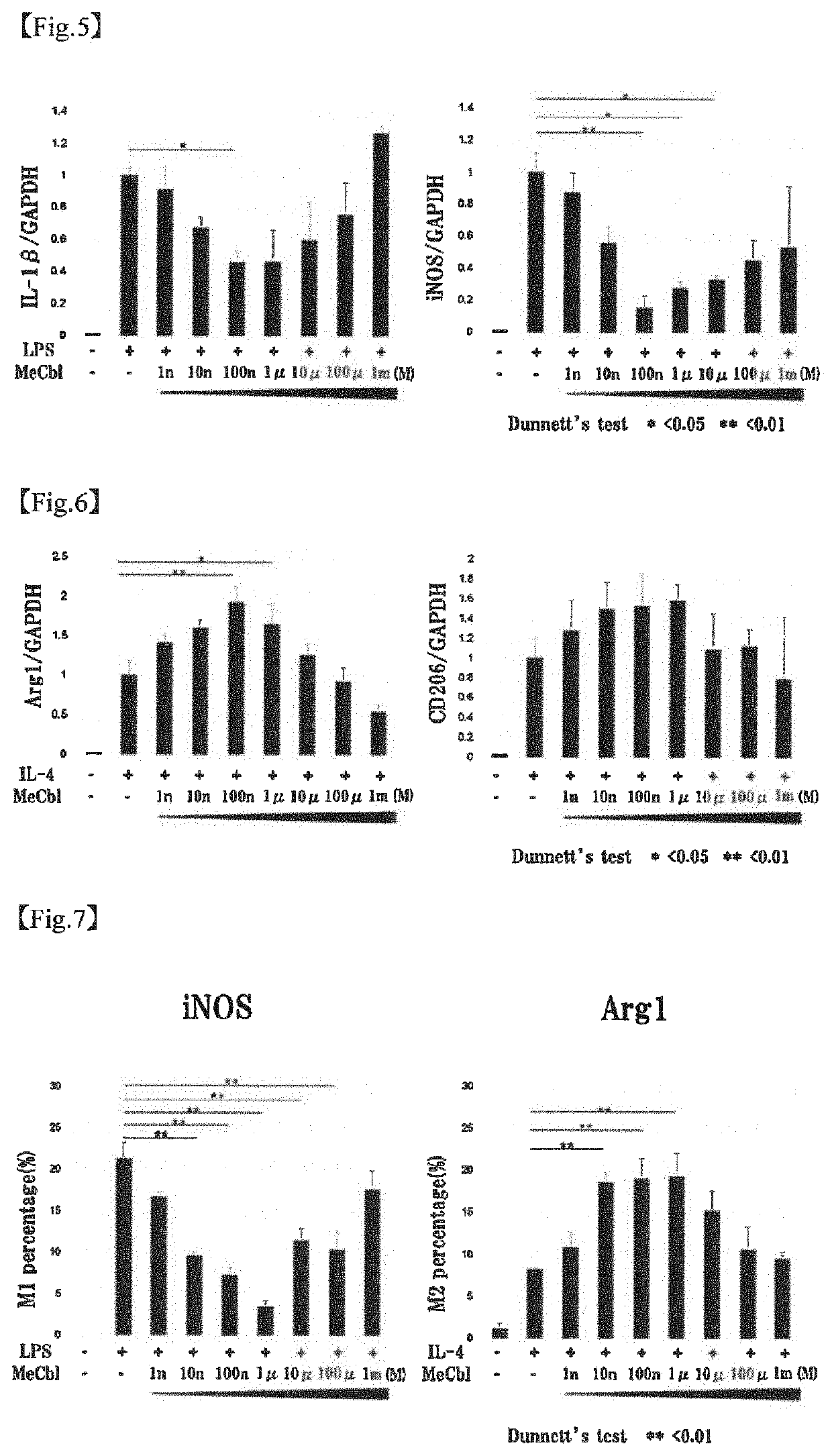Therapeutic agent for nervous system disease
a technology for the treatment of nervous system disease and nerve cells, which is applied in the direction of nervous disorders, pharmaceutical delivery mechanisms, medical preparations, etc., and can solve the problems of no additional therapeutic drug for cerebral infarction, no additional therapeutic drug has become available, and the disease greatly affects society in terms of healthcare cos
- Summary
- Abstract
- Description
- Claims
- Application Information
AI Technical Summary
Benefits of technology
Problems solved by technology
Method used
Image
Examples
example 1
Inhibiting Effect on Cerebral Cortical Neurons
[0090]The apoptosis inhibiting effect of methylcobalamin on cerebral cortical neurons was examined by TUNEL assay. Specifically, the examination was carried out as follows.
example 1-1
of Cerebral Cortical Neurons
[0091]Cerebral cortical neurons were collected and cultured by a conventional method. Cerebral cortex was dissected from a fetus of a Sprague-Dawley (SD) rat (18th day of pregnancy) and recovered in ice-cooled Dulbecco's Modified Eagle Medium (DMEM) containing 10% fetal bovine serum (FBS) and 1% penicillin / streptomycin. The pia mater and blood vessels were removed, and the remaining cerebral cortex was transferred to DMEM (containing 1% penicillin / streptomycin and no FBS) and cut into small pieces having a size of 1 mm by surgical scissors. Papain (final concentration, 2 mg / ml) was added to the cell mixture, and the mixture was allowed to react at 37° C. for 30 minutes. DNase I (70 U / ml) was added to the reaction mixture and reaction was carried out for 30 seconds. Then, DMEM containing 10% FBS and 1% penicillin / streptomycin was added to terminate the reaction. The cell mixture was centrifuged at 800 rpm, the residue was re-suspended in DMEM containing 10...
example 1-2
[0092]To the cerebral cortical neurons (Example 1-1) cultured on a PLL-coated 8-well chamber slide, 20 mM glutamic acid and 10 μM methylcobalamin (MeCbl) were added. After 18 hours, the proportion of apoptotic cells was evaluated using Promega's DeadEnd Fluorometric TUNEL System. Cells were fixed with 4% paraformaldehyde (PFA) at 4° C. for 25 minutes. After cells were permeabilized with 0.2% Triton X-100 for 5 minutes, an incubation buffer was added, and the mixture was left stand at 37° C. with light shielding for 60 minutes to label the permeabilized cells. The nuclei were labeled with 4′6-diamidino-2-phenylindole (DAPI). The total cell number and the number of TUNEL-positive cells were determined.
PUM
 Login to View More
Login to View More Abstract
Description
Claims
Application Information
 Login to View More
Login to View More - R&D
- Intellectual Property
- Life Sciences
- Materials
- Tech Scout
- Unparalleled Data Quality
- Higher Quality Content
- 60% Fewer Hallucinations
Browse by: Latest US Patents, China's latest patents, Technical Efficacy Thesaurus, Application Domain, Technology Topic, Popular Technical Reports.
© 2025 PatSnap. All rights reserved.Legal|Privacy policy|Modern Slavery Act Transparency Statement|Sitemap|About US| Contact US: help@patsnap.com



